 "ttyymmnn" (ttyymmnn)
"ttyymmnn" (ttyymmnn)
10/19/2018 at 12:35 • Filed to: wingspan, Planelopnik, TDIAH
 4
4
 5
5
 "ttyymmnn" (ttyymmnn)
"ttyymmnn" (ttyymmnn)
10/19/2018 at 12:35 • Filed to: wingspan, Planelopnik, TDIAH |  4 4
|  5 5 |
!!! UNKNOWN CONTENT TYPE !!!
Welcome to
This Date in Aviation History
, getting of you caught up on milestones, important historical events and people in aviation from October 17 through October 19.
!!! UNKNOWN CONTENT TYPE !!!
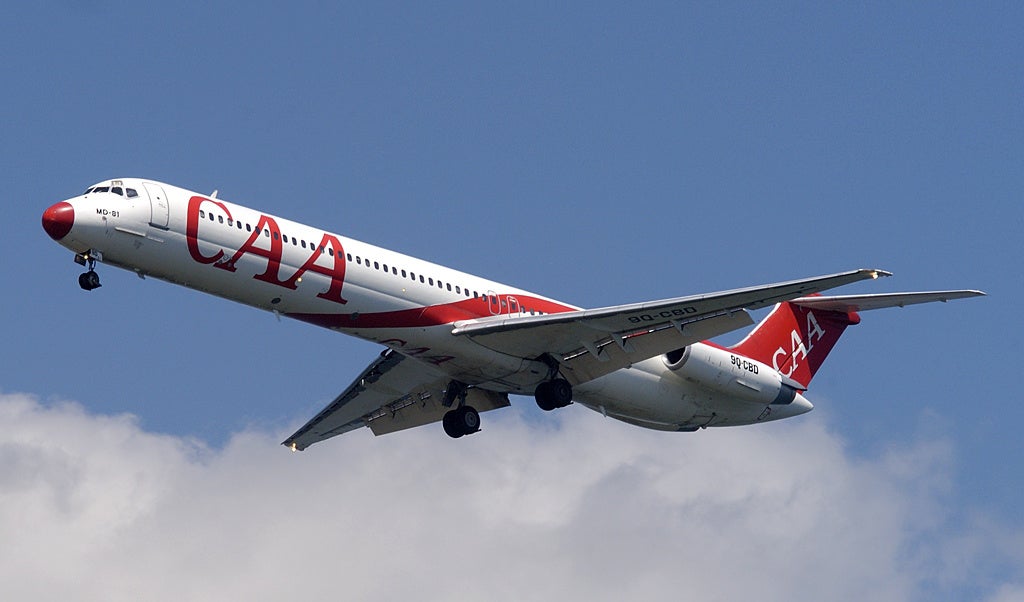 !!!CAPTION ERROR: MAY BE MULTI-LINE OR CONTAIN LINK!!!
!!!CAPTION ERROR: MAY BE MULTI-LINE OR CONTAIN LINK!!!
October 18, 1979 – The first flight of the McDonnell Douglas MD-80. In the early days of jet airliner design, aircraft such as the !!!error: Indecipherable SUB-paragraph formatting!!! and !!!error: Indecipherable SUB-paragraph formatting!!! provided four-engine range and plenty of seating for large numbers of passengers. But as passenger jet aviation evolved, airlines found that they needed smaller airliners that could operate more economically on shorter routes. The !!!error: Indecipherable SUB-paragraph formatting!!! initially responded to that requirement with the development of the !!!error: Indecipherable SUB-paragraph formatting!!! , a single-aisle airliner that appeared to take significant design cues from the !!!error: Indecipherable SUB-paragraph formatting!!! , particularly with the placement of the airliner’s two engines on the rear of the fuselage. But where the Caravelle had a traditional tailplane, Douglas fitted a T-tail, which helped to keep the tailplane out of the disturbed airflow from the wings and fuselage.
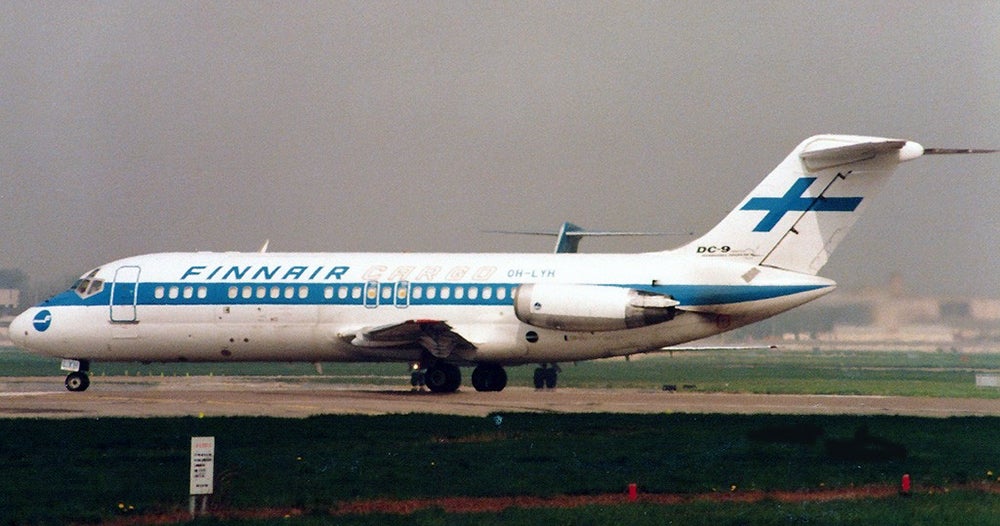 !!!CAPTION ERROR: MAY BE MULTI-LINE OR CONTAIN LINK!!!
!!!CAPTION ERROR: MAY BE MULTI-LINE OR CONTAIN LINK!!!
The DC-9 entered service in 1965 and went on to a successful career. And, as the popularity of air travel grew, the DC-9 grew along with it. Following the introduction of the original DC-9, the Series 10, McDonnell Douglas (Douglas had merged with the !!!error: Indecipherable SUB-paragraph formatting!!! in 1967) began to develop variants, stretching the fuselage to accommodate more passengers and upgrading the !!!error: Indecipherable SUB-paragraph formatting!!! engines. By the time McDonnell Douglas reached the fifth variant, the DC-9-50, passenger capacity had grown to 139 seats. But the DC-9 still had room to grow.
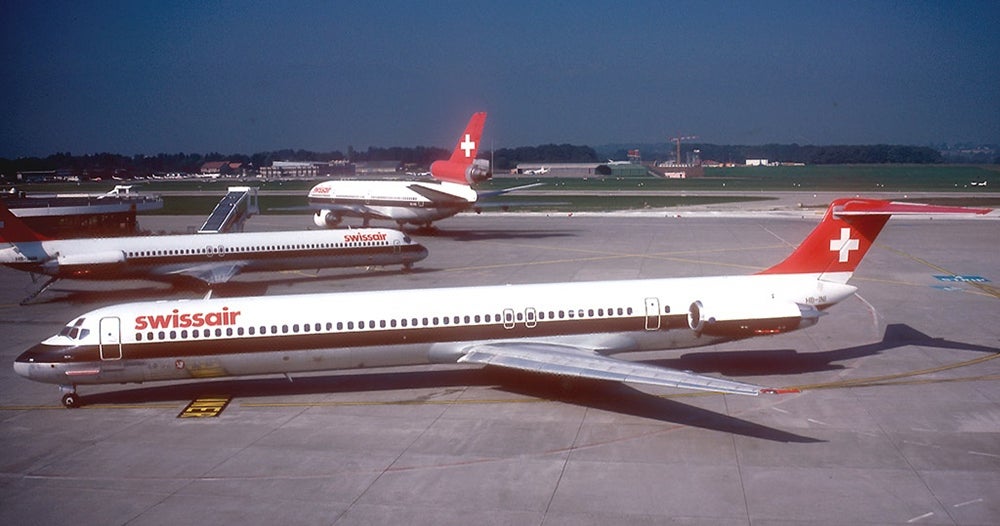 !!!CAPTION ERROR: MAY BE MULTI-LINE OR CONTAIN LINK!!!
!!!CAPTION ERROR: MAY BE MULTI-LINE OR CONTAIN LINK!!!
The second generation of the DC-9 series, originally called the DC-9-80 or DC-9 Super 80, was renamed the MD-80, which simplified the nomenclature and also reflected the newly-merged companies. The MD-80, or “Mad Dog” as it is affectionately known, kept the DC-9’s characteristic five-across seating in coach, but the fuselage was lengthened by just over 14 feet compared to the previous DC-9-50, which allowed for 130 to 172 passengers depending on configuration. New, more efficient and quieter Pratt & Whitney JT8D high-bypass turbofan engines increased the airliner’s range and provided a higher maximum takeoff weight (MTOW). Despite changes to engines, wing design, and upgraded cockpit, the MD-80 was not considered a new aircraft by the FAA, and continues to operate under the original type certificate issued for the DC-9. The decision to change the name to MD-80 was purely a marketing choice.
 !!!CAPTION ERROR: MAY BE MULTI-LINE OR CONTAIN LINK!!!
!!!CAPTION ERROR: MAY BE MULTI-LINE OR CONTAIN LINK!!!
Following its maiden flight, the MD-80 entered service with Swissair and Austrian Airlines in 1980, and nearly 1,200 were delivered between 1980 and 1999. The MD-80 has been continuously upgraded throughout production, and now exists in the -81, -82, -83, -87 and -88 variants, all of which are essentially similar, but with upgrades to engines or avionics. The final iteration of the series that began in 1965 with the DC-9, the !!!error: Indecipherable SUB-paragraph formatting!!! , was initially marketed as the MD-95 before McDonnell Douglas merged with Boeing in 1997.
!!! UNKNOWN CONTENT TYPE !!!
All four major variants of the original DC-9 are still flying today, since they all look very similar, it can be difficult for plane spotters to tell them apart. Here’s a quick guide to identifying the four basic versions.
 !!!CAPTION ERROR: MAY BE MULTI-LINE OR CONTAIN LINK!!!
!!!CAPTION ERROR: MAY BE MULTI-LINE OR CONTAIN LINK!!!
DC-9: Short fuselage, no !!!error: Indecipherable SUB-paragraph formatting!!! under the cockpit, pointy tail. (The last DC-9 variant, the DC-9-50, was equipped with strakes, but it retained the cone-shaped tail.)
MD-80 series: Longer fuselage, strakes under the cockpit, pinch tail, skinny (low-bypass) engines.
MD-90 series: Longer fuselage, strakes under the cockpit, pinch tail, fat (high-bypass) engines.
Boeing 717: Shorter body, no strakes under the cockpit, pinch tail, fat engines.
Essentially, since the original DC-9 and B717 are a similar size, you can tell them apart by the tail cone and the engine size. The MD-80 and MD-90, with are also similar in size, can be differentiated by their engine size.
!!! UNKNOWN CONTENT TYPE !!!
Short Takeoff
!!! UNKNOWN CONTENT TYPE !!!
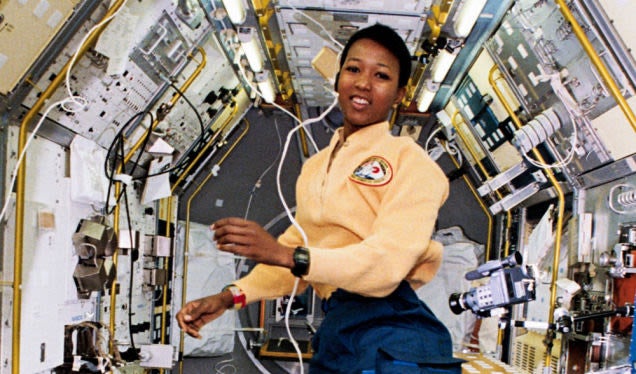
(NASA)
October 17, 1956 – The birth of Mae Jemison. The first African-American woman to fly in space, Jemison flew as a Mission Specialist on the Space Shuttle !!!error: Indecipherable SUB-paragraph formatting!!! on !!!error: Indecipherable SUB-paragraph formatting!!! from September 12-20, 1992, logging just over 190 hours in space. Before becoming an astronaut, Jemison was a practicing physician and a member of the Peace Corps, and cites the role of !!!error: Indecipherable SUB-paragraph formatting!!! on the television series !!!error: Indecipherable SUB-paragraph formatting!!! as her inspiration for become an astronaut. Following her one mission to space, Jemison retired from NASA in 1993 to start a technology company and made an appearance on !!!error: Indecipherable SUB-paragraph formatting!!! in 1993. (NASA photo)
!!! UNKNOWN CONTENT TYPE !!!
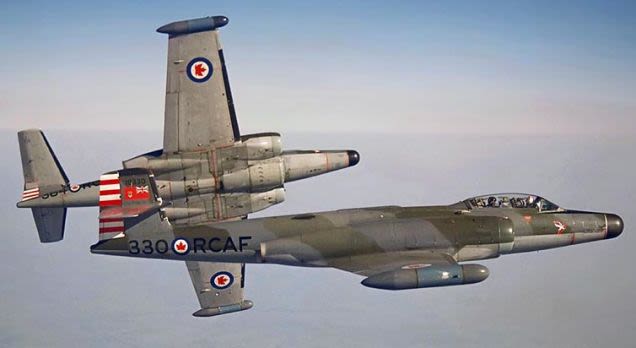
(Canadian Department of National Defence)
October 17, 1952 – The Avro Canada CF-100 Canuck enters service with the Royal Canadian Air Force.
The Canuck, known to its pilots as the “Clunk” because of the sound made by the retracting nose wheel, was the only domestically-produced Canadian jet fighter to enter mass production. The CF-100 served as an interceptor for the RCAF throughout the
!!!error: Indecipherable SUB-paragraph formatting!!!
, serving as part of the
!!!error: Indecipherable SUB-paragraph formatting!!!
(NORAD) and with
!!!error: Indecipherable SUB-paragraph formatting!!!
forces stationed in Europe before eventually being replaced by the
!!!error: Indecipherable SUB-paragraph formatting!!!
. A total of 692 Canucks were produced, and the type was ultimately retired in 1982.
!!! UNKNOWN CONTENT TYPE !!!
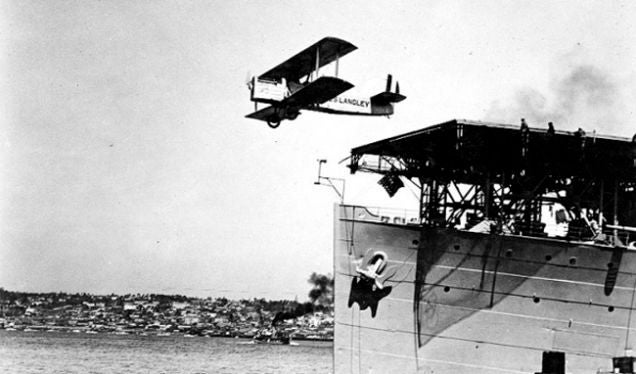
(Author unknown)
October 17, 1922 – The first takeoff from the US Navy’s first aircraft carrier. When Lt. Virgil C. Griffin launched a !!!error: Indecipherable SUB-paragraph formatting!!! biplane from the deck of the !!!error: Indecipherable SUB-paragraph formatting!!! (CV-1), it was not not the first aircraft to take off from a ship, nor the first takeoff from a ship equipped with a flight deck. However, the Langley , converted from collier USS Jupiter (AC-3), was the US Navy’s first true aircraft carrier. The flight marked the beginning of US carrier operations and heralded the ascendancy of the aircraft carrier as the new center of naval operations, supplanting the supremacy of the battleship as the nucleus of the modern naval battle group.
!!! UNKNOWN CONTENT TYPE !!!
!!! UNKNOWN CONTENT TYPE !!!
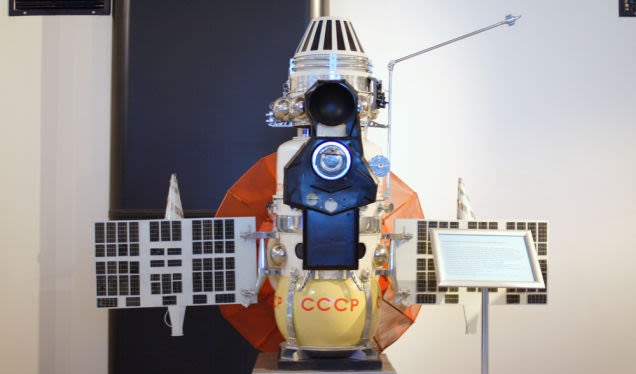 !!!CAPTION ERROR: MAY BE MULTI-LINE OR CONTAIN LINK!!!
!!!CAPTION ERROR: MAY BE MULTI-LINE OR CONTAIN LINK!!!
October 18, 1967 – Soviet space probe Venera 4 reaches Venus. Launched on June 12, 1967 atop a !!!error: Indecipherable SUB-paragraph formatting!!! rocket, Venera 4 was the fourth of 16 probes launched during the !!!error: Indecipherable SUB-paragraph formatting!!! and the first space to analyze the atmosphere of another planet. As it descended through the Venusian atmosphere, the probe’s sensors indicated that Venus is primarily carbon dioxide with some nitrogen, oxygen and water vapors, and also provided data on temperature and pressure. It is not clear if Venera 4 survived the descent, but !!!error: Indecipherable SUB-paragraph formatting!!! became the first spacecraft to land on another planet when it touched down on Venus on December 15, 1970.
!!! UNKNOWN CONTENT TYPE !!!
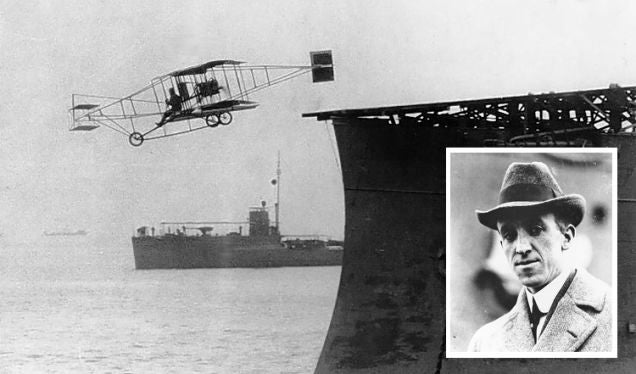
(US Navy)
October 19, 1911 – The death of Eugene Ely.
Born in Williamsburg, Iowa on October 21, 1886, Ely began his flying career when he flew—and crashed—a Curtiss biplane purchased by the auto dealer Ely was working for. Undaunted, Ely repaired the plane, and then went to work for
!!!error: Indecipherable SUB-paragraph formatting!!!
. When the US Navy began investigating flying from the deck of a ship, it was Ely who made the first successful takeoff from a ship when he flew from the USS
Birmingham
on November 14, 1910. He followed that feat by landing his
!!!error: Indecipherable SUB-paragraph formatting!!!
onboard the USS
Pennsylvania
two
months later. Though he was turned down for Naval service, Ely continued flying exhibitions, but was killed in a crash and posthumously awarded the
!!!error: Indecipherable SUB-paragraph formatting!!!
in 1933.
!!! UNKNOWN CONTENT TYPE !!!
Connecting Flights
!!! UNKNOWN CONTENT TYPE !!!
!!! UNKNOWN CONTENT TYPE !!!
!!! UNKNOWN CONTENT TYPE !!!
!!! UNKNOWN CONTENT TYPE !!!
!!! UNKNOWN CONTENT TYPE !!!
If you enjoy these Aviation History posts, please let me know in the comments. And if you missed any of the past articles, you can find them all at
!!!error: Indecipherable SUB-paragraph formatting!!!
. You can also find more stories about aviation, aviators and airplane oddities at
!!!error: Indecipherable SUB-paragraph formatting!!!
.
!!! UNKNOWN CONTENT TYPE !!!
 For Sweden
> ttyymmnn
For Sweden
> ttyymmnn
10/19/2018 at 12:45 |
|
Time to celebrate a legend

 Highlander-Datsuns are Forever
> ttyymmnn
Highlander-Datsuns are Forever
> ttyymmnn
10/19/2018 at 13:28 |
|
I am too familiar with the MD/Boing 717 from Delta. It’s a fine jet and rather quick.
 ttyymmnn
> Highlander-Datsuns are Forever
ttyymmnn
> Highlander-Datsuns are Forever
10/19/2018 at 14:08 |
|
I like how it’s basically a modernized DC-9, proving that Douglas got it right in the first place.
 You can tell a Finn but you can't tell him much
> ttyymmnn
You can tell a Finn but you can't tell him much
> ttyymmnn
10/22/2018 at 16:29 |
|
I just watched an interesting video on the Venera program. So many problems with lens caps. Also Venus is a nasty place.
 ttyymmnn
> You can tell a Finn but you can't tell him much
ttyymmnn
> You can tell a Finn but you can't tell him much
10/22/2018 at 16:51 |
|
Thanks. I’ll check this out when I have a bit more time.